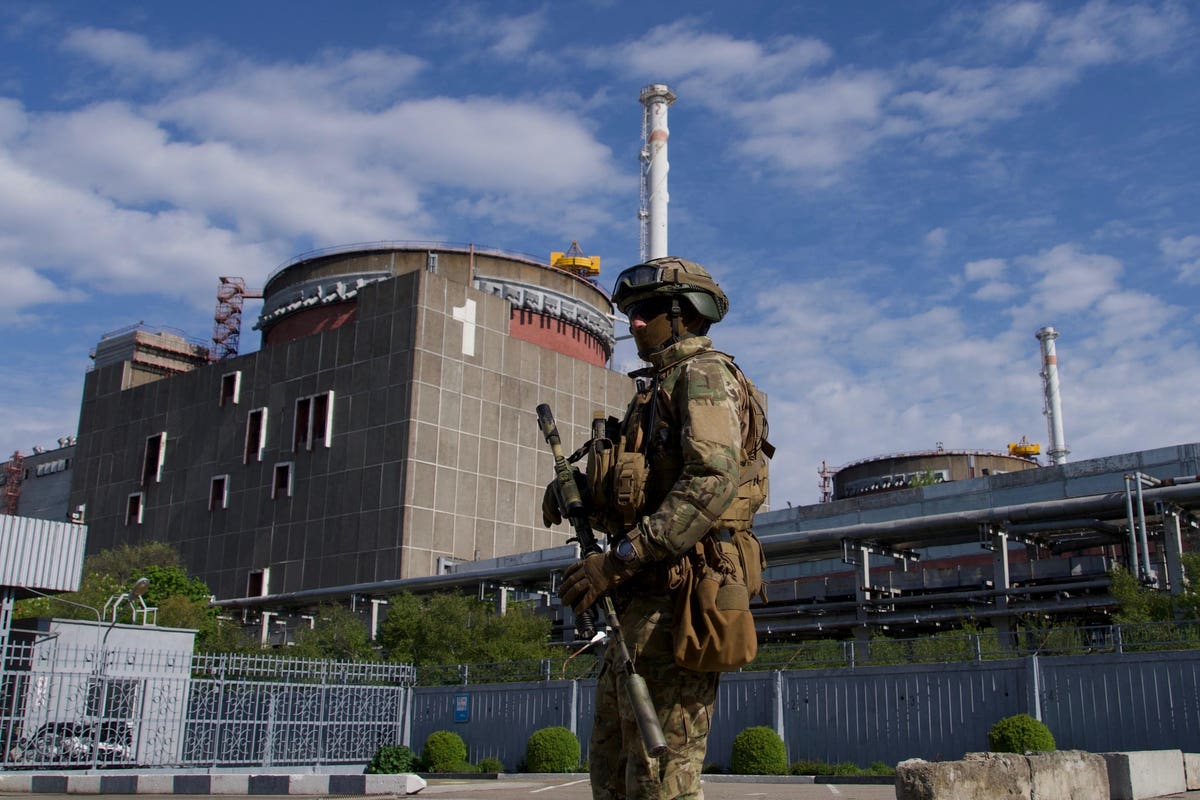While the Wagner Group’s threats have faltered, they succeeded in loosening President Putin’s grip on power. Clearly, the uprising has exposed his weaknesses, possibly leading to unpredictable behaviors. Like what?
The troubled autocrat could lash out uncontrollably, including targeting the Zaporizhzhya Nuclear Power Plant and releasing deadly radiation — bizarre because Russia’s nuclear technologies are staples worldwide.
Putin’s miscalculations so far have been legendary, causing massive troop losses. But the man has shown a willingness to inflict pain on innocents, most recently by destroying the Kakhovka dam — the equivalent of ecocide, releasing industrial lubricants, chemicals, and fertilizers.
Just as Saddam Hussein ordered hundreds of oil wells set afire while his army fled Kuwait in 1991, Putin has shown he can do the same. Human life is not the issue. Getting even is, and the natural extension of such thinking is taking out that nuclear plant. Or it could simply become a casualty of war.
“The United Nations, China, Turkey, and others with leverage over Putin need to negotiate the withdrawal of Russian troops from this nuclear station,” says Oleksiy Riabchyn, the former deputy minister of Ukraine’s Energy and the Environment, in a conversation with this writer. “Putin could choose Hitler’s scorched earth tactic.”
The Zaporizhzhya nuclear station has six reactors, five shut down. The sixth produces enough power to operate the plant.
Indeed, Rafael Grossi of the International Atomic Energy Agency traveled to Ukraine after Russia destroyed the Kakhovka dam, the primary source of cooling water for the nuclear plant. But the agency’s leader issued a statement that said there was enough cooling water to prevent the reactors’ cores from melting down and to store the spent fuel safely, at least for a few months.
Ukraine has 15 reactors at four working plants, excluding Chernobyl, which the Russians already attacked. Before the war, those units provided half of the country’s electricity. Potentially, they are all targets. Shelling the plants raises questions about Russia’s future role in the international energy picture. It also poses a dilemma about whether nuclear energy is safe in a world where one madman can unleash his vengeance.
“We are trying to get nations to impose sanctions on Russia’s nuclear sector, but many countries depend on its technology,” says Riabchyn. “It is very dangerous that Russia uses its nuclear energy as a weapon — the same it does for its oil and gas. Russia’s Rosatom now occupies and operates the Zaporizhzhya nuclear station while simultaneously selling its technologies and uranium worldwide. It’s ridiculous.”
What Can the Civilized World Do?
The war on Ukraine raises serious doubt about whether Russia should supply the uranium used to fuel nuclear power plants globally. And the Biden Administration has considered sanctions against Russia, which would have significant international energy implications.
According to the U.S. Energy Information Administration, Russia provides about 14% of this country’s uranium, costing $1 billion in 2022. About three-quarters of that is purchased under long-term contracts. Russia also provides 20% of Europe’s uranium. Australia, Canada, and Kazakhstan supply two-thirds of the world’s uranium. Only 10% of it comes from domestic mines in this country.
Meantime, Russia is responsible for nearly half of the world’s uranium enrichment capacity — the ability to take mined uranium and transform it into nuclear fuel.
That gives Russia economic leverage because it provides highly-enriched uranium necessary for advanced nuclear plants. Electricity generators and industry use those Generation IV high-temperature reactors. Because they operate at 800 degrees Celsius, they can process chemicals, desalinate ocean water, and produce clean hydrogen for electricity and transportation.
Suppose carbon neutrality by 2050 is the goal. In that case, the U.S. Department of Energy says this country must double its nuclear energy capacity. That requires more uranium — begging the question of whether the United States should become more self-sufficient.
Can the civilized world diversify its uranium and technological supply lines? Not in the short run, given Russia’s market dominance. But countries are not powerless, with the Finnish group Fennovoima canceling a contract with Rosatom last year while the United Kingdom sanctioned 86 individuals and entities connected to Russia and its ability to fund the war in Ukraine.
In the United States, the Nuclear Regulatory Commission has licensed the American Centrifuge Plant in Piketon, Ohio, and the National Enrichment Facility in Eunice, New Mexico to make highly-enriched uranium. “Critically, scaling uranium enrichment capacity in the United States is also needed to achieve U.S. and global decarbonization goals,” says a GHS Climate White Paper.
The strife between the Wagner Group and Russia’s central government will cause Putin to respond with an iron fist, threatening Ukrainians even more and potentially harming its Zaporizhzhya nuclear station. It’s ironic given Russia’s prominence— but ample reason for Western governments to also boycott its uranium supplies and nuclear technologies.
Read the full article here





